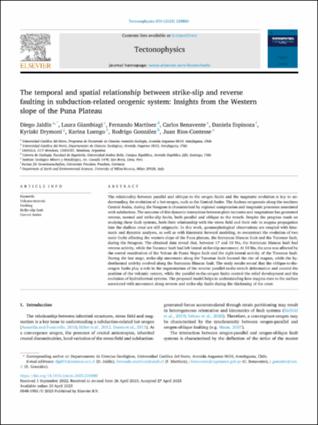Por favor, use este identificador para citar o enlazar este ítem:
https://hdl.handle.net/20.500.12544/4563Ficheros en este ítem:
| Fichero | Descripción | Tamaño | Formato | |
|---|---|---|---|---|
| Jaldin-The_temporal_spatial_...Puna Plateau-ABSTRACT.pdf | Resumen | 184.94 kB | Adobe PDF | Visualizar/Abrir |
Los ítems de DSpace están protegidos por copyright, con todos los derechos reservados, a menos que se indique lo contrario.











